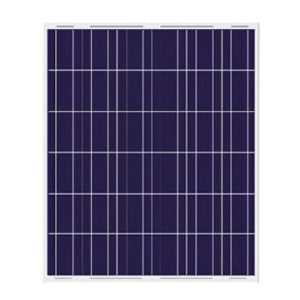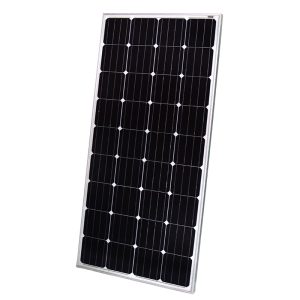In an era where sustainability is not just a buzzword but a necessity, solar energy systems have become a cornerstone for both residential and commercial setups. Among the various options available, a 2000 Watt Solar System stands out as a balanced choice for many. This article aims to provide an exhaustive guide on the cost of a 2000 Watt Solar System, breaking down various factors that contribute to the overall expenditure.
Why Choose a 2000 Watt Solar System?
When it comes to solar energy systems, size matters—not just in terms of physical dimensions but also in terms of energy output. A 2000 Watt Solar System offers a unique blend of efficiency, versatility, and affordability, making it a compelling choice for a wide range of applications.
The ‘Goldilocks Zone’ of Solar Systems
The term “Goldilocks zone” is often used in astronomy to describe a habitable zone where conditions are just right. Similarly, a 2000 Watt Solar System sits in the Goldilocks zone for residential solar installations. It provides a sweet spot between power output and cost, making it neither too small to be ineffective nor too large to be impractical for the average household.
Efficiency and Versatility: More Than Just Numbers
When we talk about a 2000 Watt Solar System, we’re talking about a system that can generate 2000 watts of power under optimal conditions. But what does this mean in practical terms?
- Daily Energy Needs: A 2000 Watt system can generate approximately 8 kWh of energy per day, assuming 4 hours of peak sunlight. This is sufficient to power essential household appliances such as lights, fans, a refrigerator, and even a small air conditioning unit.
- Versatility: The system is versatile enough to be expanded with additional panels or batteries. This means that as your energy needs grow, your system can grow with you, without requiring a complete overhaul.
Space Requirements: Maximizing Utility in Limited Spaces
One of the most significant advantages of a 2000 Watt Solar System is its relatively modest space requirement. Let’s break it down:
- Roof Space: A typical 2000 Watt system would require around 200 square feet of roof space. This is based on the standard size of solar panels, which are about 5.4 feet by 3.25 feet. For homes with limited roof space, this is a significant advantage.
- Ground-Mounted Systems: If roof space is not an option, ground-mounted systems are also available. These systems offer the same efficiency but may require additional considerations such as land availability and local zoning laws.
Components of a 2000 Watt Solar System: What Makes It Tick?
Understanding the individual components that make up a solar energy system is crucial for estimating costs and for system maintenance. Here’s a more detailed look:
Solar Panels: The Heart of the System
Solar panels are the most visible and arguably the most critical component of any solar energy system. For a 2000 Watt system, you would typically need about 6 to 8 panels, depending on the wattage of each panel. These panels are usually monocrystalline or polycrystalline, with monocrystalline panels being more efficient but also more expensive.
Inverter: The Unsung Hero
The inverter is a critical component that transforms the DC power generated by the solar panels into AC power suitable for home use. There are different types of inverters, such as string inverters and microinverters, each with its pros and cons. The choice of inverter can significantly impact the efficiency of your system.
Mounting Hardware: More Than Just a Frame
The mounting hardware includes the racking system used to secure the solar panels either on your roof or on the ground. While this may seem like a minor component, the type of mounting hardware can affect the angle at which the panels sit, impacting their efficiency.
Batteries: Optional but Recommended
While not strictly necessary, batteries can be a valuable addition to your solar energy system. They store excess energy generated during the day, which can then be used during the night or cloudy days, enhancing your system’s overall efficiency.
Installation: Not a DIY Project
While some homeowners may consider installing the solar system themselves to save on labor costs, it’s generally recommended to hire professionals. Installation involves not just mounting the panels but also setting up the electrical connections, ensuring the system meets local building codes, and optimizing the system for maximum efficiency.
Cost Breakdown: The Financial Anatomy of a 2000 Watt Solar System
When considering a solar system, the upfront cost is often the most daunting aspect for potential buyers. However, understanding the breakdown of these costs can demystify the process and help you make an informed decision.
Solar Panels: The Powerhouse Investment
Solar panels are the most significant portion of your solar system’s cost. For a 2000 Watt system, the price range is indeed between $1,000 to $2,000, but let’s dissect this further:
- Monocrystalline vs. Polycrystalline: Monocrystalline panels are more efficient but come at a higher cost. Polycrystalline panels are cheaper but less efficient. Your choice here will affect both the cost and the system’s performance.
- Brand Matters: Premium brands like SunPower or Panasonic offer high-efficiency panels but at a premium price. More budget-friendly options like Canadian Solar or Trina Solar offer good performance at a more affordable rate.
- Warranty: A longer warranty often correlates with better quality but can add to the upfront cost. It’s crucial to weigh this against the potential long-term benefits.
Inverter: The Brain Behind the Operation
The inverter is a critical but often overlooked component. Prices range from $200 to $500, and here’s why:
- String Inverters vs. Microinverters: String inverters are generally cheaper but less efficient. Microinverters are more expensive but offer better performance and come with individual panel monitoring.
- Efficiency Ratings: Higher efficiency inverters will cost more upfront but can save you money in the long run by maximizing your solar energy utilization.
Mounting Hardware: The Skeleton of Your Solar Setup
The racking system, generally costing between $100 to $300, is more than just a frame:
- Material: Aluminum racks are lightweight and resistant to corrosion but can be more expensive than galvanized steel options.
- Adjustability: Some racking systems allow for angle adjustments to optimize solar capture, adding to the cost but potentially increasing efficiency.
Batteries: The Reservoir of Your Solar Energy
Optional but highly recommended, batteries can add $500 to $1,000 to your initial investment:
- Capacity: The cost will vary depending on the storage capacity you require. Higher capacity batteries like Tesla’s Powerwall will be at the upper end of this range.
- Type: Lithium-ion batteries are more expensive than lead-acid but offer longer lifespans and better efficiency.
Installation: The Final Frontier
Installation costs can vary widely based on your location and the complexity of the job, generally ranging from $500 to $1,000:
- Labor Costs: This is highly dependent on your geographical location. Rates are generally higher in cities and lower in rural areas.
- Permitting: Some local governments require permits for solar installations, adding to the cost.
Total Cost Estimate: The Bottom Line
When you add up all these components, the total cost for a 2000 Watt Solar System can indeed range from $2,300 to $4,800. This figure can fluctuate based on optional add-ons, local labor costs, and any applicable taxes or permits.
Financing Options: Making Solar Affordable
The upfront cost can be daunting, but various financing options can make solar energy accessible:
- Solar Loans: These are specific loans designed for solar installations, often with favorable interest rates.
- Leases and PPAs: These options involve little to no upfront cost but may result in higher long-term expenses.
Return on Investment (ROI): The Payoff
A 2000 Watt Solar System can pay for itself in 5 to 7 years, depending on your electricity rates and any state or federal incentives for which you may qualify. The ROI could be even quicker with net metering, where you can sell excess energy back to the grid.
Conclusion
Investing in a 2000 Watt Solar System is not just an eco-friendly decision but also a financially prudent one. With a variety of components and financing options to choose from, you can find a system that fits both your needs and your budget.



